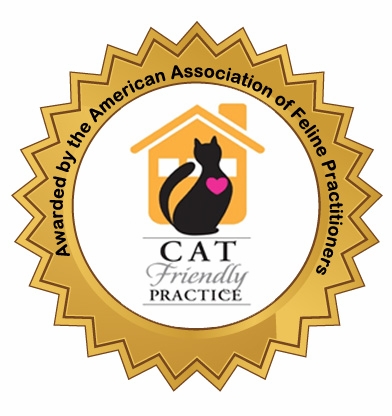
FALL ALLERGIES IN PETS
Fall is just around the corner and with it comes beautiful colors, cool weather, and the blooming of many weeds and flowers. For anyone who suffers from seasonal allergies, this beautiful time of year can be absolutely miserable! The ragweed and goldenrod and fungal spores etc are all going to be coming out to play, and this can cause seasonal allergies to flare for our pets as well as ourselves!
Pets can be affected by allergies just like us humans. Allergies can be due to either a component of the food that they are eating (food sensitivities) or they can be due to environmental allergies as well. Some dogs and cats have a component of both food and environmental allergy, which can really make things complicated causing year round issues.
Many people associate itching with allergies in pets. It is important to remember that recurrent ear infections, eye infections, skin infections, urinary tract infections and anal gland infections can also be signs of allergies in our pets. Your pet may not really be itchy at all and still have an underlying allergy that needs to be dealt with. It’s also possible that you pet may be INSANELY itchy all the time but NOT have any allergies going on. We can see itching of the skin for a variety of reasons, so it’s always best to have your itchy pet checked over by your veterinarian.
So, what are allergies and how do we diagnose and treat them?
Without getting too technical, allergies are an overreaction of our body’s immune system to substances that it perceives as threatening, but in reality they are not. This reaction involves activation of a cell type called a “Mast Cell”. Mast cells are throughout our bodies and they contain a substance called “histamine”. When these cells are activated by an allergen, the Mast Cells will release their histamine stores, and it’s the histamines that cause all of the classic signs of allergies including runny nose, sneezing, coughing, and itching! The histamines cause inflammation of many tissues in the body causing discomfort for us and our pets! These Mast Cells can be triggered by certain proteins in food or by allergens in the environment.
We can diagnose allergies in our pets in a couple of different ways. First, having your pet in for an exam is CRUCIAL to diagnosing them with allergy. There are certain patterns that veterinarians look for that may tip us off to whether your pet likely has a food related allergy, environmental allergy, or potentially a component of both. Also, with allergies there can be secondary bacterial or yeast infections that we can pick up on that need to be treated as well to get your pet feeling better! We will do a thorough exam of your pet, take a very detailed history from you, and often look at skin swabs/scrapes under the microscope in the clinic to determine the treatment that your pet needs.
For food allergies, we typically diagnose these by the patterns that your pets are showing. Ear irritations/infections, licking and chewing at paws, and anal gland issues/licking at the anus are all hallmarks of food allergy. Also, having allergies all year round (not just in the spring/summer/fall) can be a clue as well. That being said, not all of these are going to be signs in every pet, as every animal is different. To definitively diagnose a food allergy, we need to put your pet on an exclusion diet using a veterinary grade food that has a single novel protein AND carbohydrate source. This means that there is only ONE protein source and ONE carb source in the food AND they are things that your pet isn’t likely used to being exposed to. For instance, the best food trial diet to start with for dogs is a food called “k/o” which stands for Kangaroo and Oatmeal (the protein and carb source). For cats there are venison and green pea or soy based foods. There are also diets called “Hydrolyzed” diets where the proteins in the food are broken up into very small pieces making them less likely to cause the mast cells to react. Your vet will help you to decide which food to start with for your individual pet. The idea is that we get them onto one of these diets for 8-12 weeks and see if their symptoms improve. Again, its VERY important to treat any secondary bacteria/yeast infections during this time because if they are left to progress we won’t see any difference with the new food. It is also very important not to feed your dog or cat ANYTHING else other than their prescribed food for this 8-12 week period. If they improve during this time, they do have a food allergy causing at least part of their issues. We can then start trying to add protein and carb sources in one at a time to see if they have a reaction or not. If they do not respond well to the exclusion diet, it does NOT mean that they don’t have a food allergy. In these cases we will usually change to a different hypoallergenic food to do another food trial. IF you have gone through several food trials, taken care of any secondary infections, and have been faithful during the food trials (no treats or other foods other than the hypo diet), your pet is likely suffering from an environmental allergy.
Environmental allergies in pets are quite common, and they can be very frustrating because we don’t have much control over the allergens that are around us! Typically environmental allergies are much worse in the spring and in the fall with the blooming of certain plants, but they can be all year round as well if they are allergic to common house allergens such as dust mites or cleaners or scented sprays, etc. The best way to diagnose your pet with environmental allergy is to see a veterinary dermatology specialist to have your pet allergy tested. The allergy testing done in pets is very similar to that done in humans. Your pet will get many small injections under their skin to see how they react to certain allergens (with sedation of course!), and from the results of this test, many animals can have allergy injections made up specifically tailored to what they are most allergic to. This will allow us to start a desensitization program with weekly or monthly allergy injections to slowly give your pets relief over time.
Both the food allergy and environmental allergy treatments are not anything close to a “quick fix” as both take time and dedication to fully understand and conquer. There are medications that we can use for your pet to keep them more comfortable as we institute these tests including over the counter anti-histamines (Benadryl, reactine, etc) as well as veterinary prescribed medications (Vanectyl-P, Dexamethasone, Atopica, etc). There are also excellent therapeutic shampoos as well as more natural treatments (Omega fatty acids, Vitamin E, Antioxidants, etc). Your vet will let you know which of these medications/supplements they fell will best help your pet to gain some fast acting relief from their allergy symptoms. Please remember to NEVER give your pet ANY medications without consulting your veterinarian first!
If you think your pet may be suffering from allergies this fall, please give our clinic a call and we will do our best to help you and your pet out! Being itchy and having ongoing ear/skin/anal gland infections is not fun for your pet so treating them promptly and getting to the root cause of the issues is essential to getting them feeling better again!
Dr. Christine Nawas, BSc, DVM
Associate Veterinarian, Erin Mills Pet Hospital
(c) Erin Mills Pet Hospital



